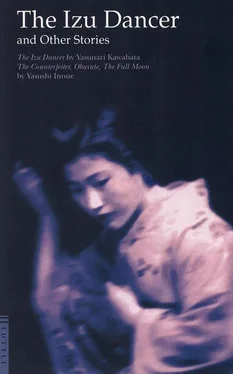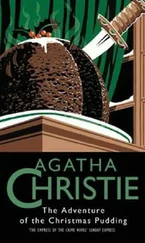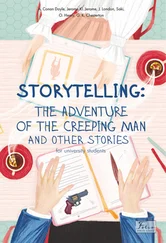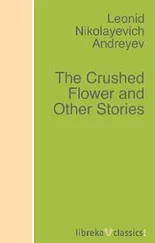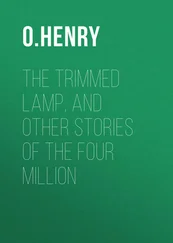The three stories assembled here reveal yet another facet of Yasushi Inoue — his great compassion for his fellow human being. The tragic Hosen Hara in
The Counterfeiter
and the pathetic Kagebayashi of
The Full Moon
are not particularly pleasant people by any standards, Oriental or Western, but the sympathetic compassion with which Inoue handles them provides a real insight into the nature of the author. It therefore seems rather surprising to find in
Obasute
that Inoue harbors a fear that "misanthropic blood" possibly flows through his veins.
Finally, a word or two about these translations and the subject of translation itself. For some years a battle has been raging among the critics of translations regarding the functions of the translator and the liberties he may take with the language of the author's original work. On one side of this argument, there are those who challenge even slight deviations from the original and condemn the translator who departs at all from a literal rendition of the author's lines. On the other side, there is the group of translators themselves, and a few critics who support them, who wander rather far afield in trying to render the author's thoughts, his language, and his imagery in a more palatable form for the Western reader. This argument is not unique to the translation of Japanese literature, nor is it an argument that belongs only to modern times. One need only recall the various approaches to the translation of the Bible to realize how eternal this controversy is. The translations in this volume lie somewhere between the extremes of the two schools of thought. If anything, they tend toward literal renditions, and a purposeful attempt has been made to adhere as closely as possible to Inoue's originals. Some liberties have admittedly been taken, however; some of Inoue's long involved sentences have been broken up into two, three, or sometimes even more, sentences. An attempt has also been made to keep footnotes to a minimum because of a fear that they may detract from the flow of Inoue's language. As a result, it has at times been necessary to induce some descriptive language and circumlocutions to help the Westerner with words or situations that are peculiarly Japanese. In general, however, a conscientious effort has been made to present Inoue's stories in their original form, preserving their inherently Japanese character and tone with a minimum of departures from the original flavor. With the exception of these few explanatory departures, where deviations from the originals may have crept in, they should be blamed on the translator's misinterpretation of the text rather than purposeful distortions.
LEON PICON
THE COUNTERFEITER( Aru Gisakka no Shogai )
I
ALMOST ten years have elapsed since I was commissioned by the family of the Japanese artist Keigaku Onuki to undertake the job of compiling Keigaku's biography, but I still have not fulfilled the contract. This spring I received from his family in Kyoto one of those printed announcements, with reply-postcard attached, inviting me to attend memorial services at a certain Zen temple commemorating the thirteenth anniversary of Keigaku's death. Frankly, I found it a bit difficult to face Onuki's people at that time. Unfortunately, or fortunately, I couldn't attend the services because of my work. But, the fact of the matter is that I was rather relieved that I
actually
could not attend.
When the contract for compiling Keigaku's biography was first negotiated by Onuki's heir, Takuhiko — I think that was around 1942—the original understanding was that there was no particular hurry about completing it. On the other hand, he had implied that he would like to distribute copies, as an offering to the spirit of the departed, to those who attended the seventh memorial services, so he wanted to have the work completed in time for publication prior to that occasion. The seventh anniversary was to be commemorated in April 1945, the year the war ended, and the feverish pace of life toward the end of the war was confused enough for both the Onuki family and me, even without Keigaku's biography. Consequently, my work on the biography reached a state of temporary suspension while I was still in the process of collecting material, and although I hadn't actually abandoned the project, my contract came to a natural dissolution. As it happened, the contract was renegotiated by the Onuki family after the war. They said that now that normalcy was returning, they couldn't wait and wanted me to complete the biography as soon as possible. So ever since then I have been getting postcards from Takuhiko, roughly once a year, asking about the status of my progress on the biography and hinting pointedly at the desirability of speed. At such times, in desperation, I have been forced to fabricate excuses in order to placate him.
Originally, I had been selected for the onerous task of doing Keigaku's biography for a variety of reasons. At that time I was a fine-arts reporter for one of the Osaka newspapers, and in the course of my work I had met with the late artist on many occasions. It seems also that the late Keigaku had held me in higher esteem than he held the reporters of other papers. There were all sorts of factors like that. Additionally, I was selected by the Onuki family and by Keigaku's disciples because they felt that since I was the most competent person to undertake the biography, it would be relatively easy for me to collect material. Also, as a fine-arts reporter with somewhat of a store of knowledge of the artistic world, my point of view was likely to be bought.
When I was first approached, I had jumped at the opportunity of taking on this arduous task. I was very fond not only of Keigaku's work but also of Keigaku as an individual. Besides, compiling a biography of Keigaku would be more than just writing a history of Kyoto's art circles with him at the core; it would be like writing a history of Japan's art world. I thought it would not be a bad idea at all to seize this once-in-a-lifetime opportunity for me, a reporter, to do a study of the transition and change in Japan's art world from the Meiji period
*
on.
On taking a second hard look at the job, however, I found that it was not going to be as simple as I had thought. In the first place, one had to start from the beginning by drawing up a chronology. Before constructing the magnificent Kyoto mansion in which he lived in his declining years, Keigaku had changed his residence in and around Kyoto more than ten times — as his mood suited him. And, also as his mood suited him, for half of each year he was in a state of constant travel. Thus it was difficult to ascertain when, where, and at which ateliers his works, so publicized throughout the world, had been produced. Moreover, as I started to trace the course of his actions during a career of more than sixty years and tried to reconcile the contradictory stories of him told by all sorts of artists, disciples, art dealers, and exhibitors, the job turned out to be not so simple as it had appeared from the outside.
Another thing:
When Keigaku was fifty years old, he buried the wife who had been with him through thick and thin over the years. Thereafter, he lived with an aged housemaid who survived him by two years. He also always had one or another student staying with him, but these students were constantly shifting, unable to tolerate Keigaku very long because of his volatile personality. The one person who should have known the late artist's movements and actions best, his heir, Takuhiko, had lived in France for a long time and had only returned to Japan five years before Keigaku died. But he kept a separate house in Tokyo, and since he was a sort of eccentric egotist, as might be expected, he had almost no contact with Keigaku's way of life. Thus, it might be said that there was practically no one who possessed a detailed knowledge of Keigaku's private life. To all this, one more thing must be added — and this follows from the nature of Keigaku's independent, extravagant, and rustic character — he always frowned upon what we call The Art Circles and lived consistently isolated from the artistic world. Because of this, I encountered tremendous difficulties and obstacles when I reached the point of collecting the materials for his biography.
Читать дальше
